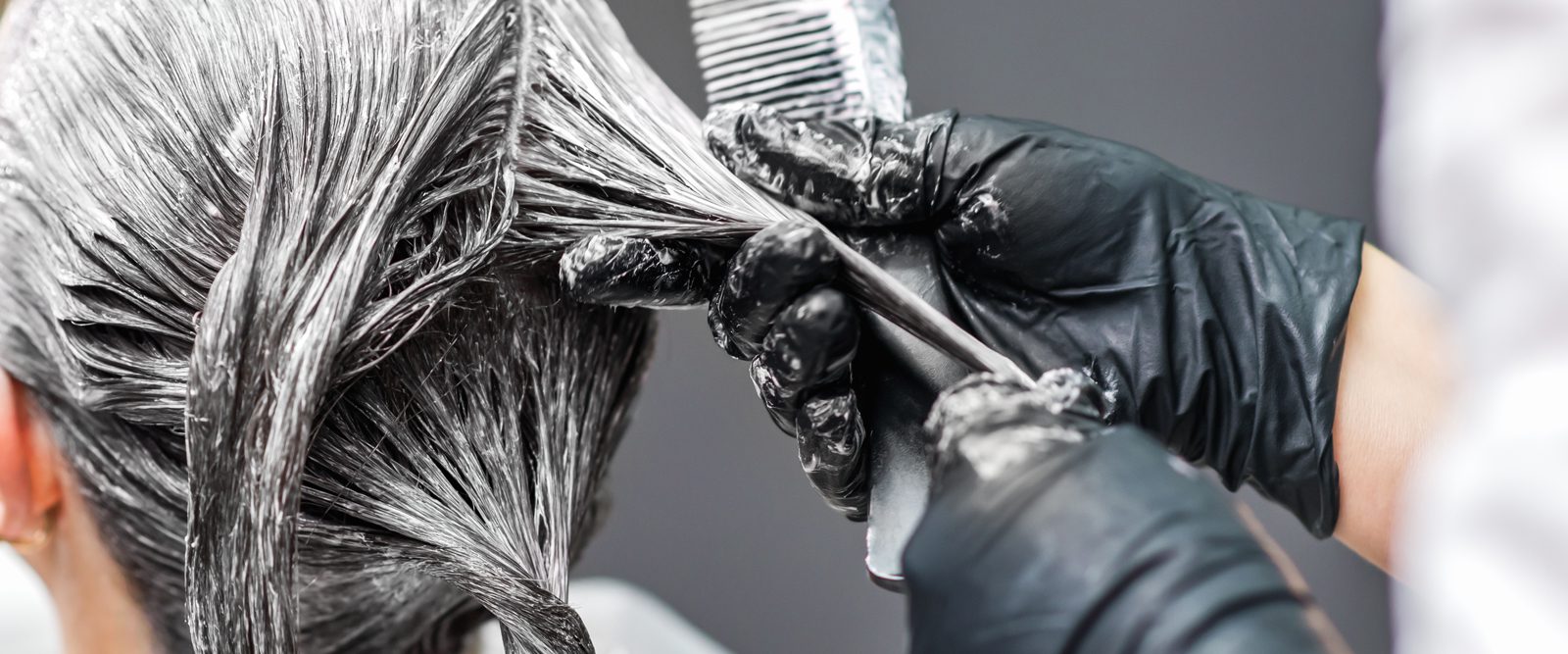What to Know About the Connection Between Hair Relaxers and Uterine Cancer
A radiation oncologist explains the latest data on how the use of chemical hair straighteners may lead to an increased risk in certain cancers.

In October 2023, the FDA announced plans to propose a ban on hair relaxers and straightening products that contain the chemical formaldehyde, citing both short-term adverse health effects, such as breathing problems, and long-term effects, including an increased risk of hormone-related cancers.
Since then, the proposed ban has been repeatedly delayed, and it’s unclear when it will be released. However, the health risks associated with these products remain severe.
A study published last year from Boston University suggests that Black women who have used relaxers more than twice a year or for more than five years have a 50% increase in uterine cancer risk. According to the same study, up to 95% of adult Black women in the U.S. reported ever having used hair relaxers.
“These straighteners have already been implicated in breast cancer, ovarian cancer — and now in uterine cancer,” says Dr. Onyinye D. Balogun, a radiation oncologist at NewYork-Presbyterian Brooklyn Methodist Hospital “Even though more evidence is needed, we need to sit up and pay close attention.”
Health Matters spoke with Dr. Balogun about why chemical straighteners may be linked to certain types of cancer and how the risk can be decreased.

Dr. Onyinye Balogun
What are hair relaxers and chemical straighteners, and how do they work?
Relaxers and hair straighteners are cream- or lotion-based formulas that contain chemicals that are applied to the hair for a certain amount of time to change curlier textures to straight or wavy textures. They tend to be more often used by Black women.
For a long time, straight hair has been held up as the standard, especially in the workplace, and historically, many Black women conformed to this standard by chemically straightening or relaxing their hair. Many get their hair relaxed for the first time as young children; it’s almost like a rite of passage.
What kinds of chemicals are in these products, and why might they be cause for concern?
These products are full of chemicals, and some may be combined with formaldehyde; formaldehyde has been considered carcinogenic and is the same chemical used to preserve dead bodies. When they are applied to the hair, we believe they may be absorbed right through the scalp and then enter the body. Through entering the body, they can then alter estrogen-dependent pathways — processes that determine and regulate the amount of estrogen in the body — which can lead to endometrial tumors. And that is really concerning.
Association is not causality. But we do have evidence that a number of these chemicals are associated with breast and ovarian cancers because they disrupt the estrogen levels in the body, and that could be the way in which they may be leading to higher rates of endometrial (uterine) cancer.
Other concerning chemicals found in relaxers include parabens and phthalates. There have been at least two key studies, one recently published by Boston University and another published last year by the National Institutes of Health (NIH), that showed a concerning connection between a higher frequency of use of hair straighteners and an increased risk of uterine cancer. The latter found that women who had endometrial cancer had higher concentrations of parabens in their endometrial tissue and phthalates in their urine samples.
Why are relaxers specifically linked to hormone-related cancers?
Basically, there are different types of endometrial cancers, and some are estrogen-receptor positive. This means that, just like breast cancers, these cancers use estrogen to grow. We’re also seeing a higher rate of aggressive types that are not as clearly associated with hormonal stimulation.
Chemicals in hair relaxers may act like estrogens, causing your body to perceive that there’s more estrogen than there actually is. It’s similar to what happens with obesity: Excess fat can be converted through certain pathways into estrogen, so your body is perceiving more estrogen than it should. As a result, obesity is a risk factor for endometrial cancers.
A Black woman’s five-year survival is 62%, compared to 84% for a white woman who’s diagnosed with endometrial cancer here in the U.S. That’s one of the highest cancer disparities that exists, and we need to understand why it’s happening. A lot more research is needed.
We can’t say that it’s only the fault of these parabens, phthalates, formaldehyde, and other chemicals. But we can say that in general, if there is an increase in mortality, maybe part of this is a manifestation of years and years of exposure to these hair straighteners.
What are some safer alternatives for people who want to continue to straighten their hair without exposing themselves to harmful chemicals?
Flat-ironing is one way to try and get your hair straighter. You can even use a combination of blow-drying your hair out and then flat-ironing it. But these methods can adversely affect the texture of the hair long term, so you’d want to use them sparingly.
I like to change my own hair often. A weave is one option: here, your hair is braided down close to the scalp, then tracks of straight hair are sewn in. This is one way you can get a straight-hair look without the harm. Wigs and protective hairstyles, including braids, are other options. You can even get micro-braids that have some hair left out, which gives a straight hair aesthetic.
What is your advice to people who want to stop relaxing their hair?
I’m glad that more recently we’ve seen a movement toward natural hair and embracing our natural textures. I don’t think many people understand the potential harms from chemical straighteners.
Just like smoking, though, I don’t necessarily tell people to just stop using relaxers cold turkey. If you want someone to start developing an exercise habit, you don’t tell them, “OK, now go out and run a marathon.” I suggest you start ramping down the frequency of use; every other month instead of every month, for example. And try experimenting with protective styles in between.
What I really want people to understand is that we always need to look at ways that we can try to prevent or decrease our risk of developing cancer. Discontinuing the use of chemical straighteners and relaxers may be a way to decrease that risk.
